Skin in the Game

Being on top of the world was only a geography thing until ARG Industrial became employee-owned.
In less than a month, millions of children will start mailing their wish lists to the North Pole. Meanwhile, an industrial distributor based 250 miles south of the fabled toy workshop is flying arctic circles around Santa when it comes to fulfilling orders and pouring out services that customers dream of. Contrary to the elf-employed enterprise, the recently rebranded ARG Industrial in Anchorage, Alaska, (formerly known as Alaska Rubber Group) became an employee stock ownership plan (ESOP) company in 2006. It was an event that sparked a “fire in the belly” growth frenzy that’s still burning strong in the Pacific Northwest, according to President and CEO Mike Mortensen.
Founded as Alaska Rubber & Supply Inc. in 1980, the company started as a single location distributor of hose and fittings as well as industrial supplies. It was one of numerous businesses owned by brothers Don and Drennan Adams, who, once in their 70s, became less active in the business and ultimately were persuaded by some of the managers to sell the company to an employee stock ownership plan. On the one hand, says Mortensen, who was then chief operating officer and head of purchasing, the employee team of 20 was well accustomed to thriving independently without much oversight. Nevertheless, the symbolic occasion of employees officially owning the business was something of a blast-off moment, he recalls. Seventeen years later, ARG Industrial is a booming, regional player with 12 locations and 200 people.
“We kind of felt like we owned it before we owned it – we had that kind of pride in it,” Mortensen said. “From the time I first started in the company, I thought, ‘Man, this is really cool.’ We do neat things – we fabricate, we manufacture, we build things that our customers really count on, and we can be creative with it. Twelve years into it, I knew I could do something with this business, but if this is where I was going to plant my flag, there needed to be some skin in the game, and there were several of us thinking that way. It wasn’t too long after we became an ESOP that we started to experience growth based on this mentality of ‘hey, we got this, now let’s go!’”
Like all business exit strategies, forming an ESOP has distinct challenges and benefits. Heavily regulated by the Internal Revenue Service and the Department of Labor, ESOPs require negotiating a new loan, can take many months, and demand a written plan with the involvement of numerous professionals. And, said Mortensen, it’s not an inexpensive endeavor. But in the absence of a family successor or prospective M&A partner, ESOP offered both an opportunity to reward a loyal staff along with the tax advantage of owners deferring some of their capital gains. Owners also can enjoy the benefits of creating their own buyer, release from personal guarantees, and retaining a bigger share of the sale price as cash in the bank.
In the end, Mortensen said one of the owners repeatedly affirmed his pride in the team and pleasure in seeing employees have a financial stake in the business greater than a paycheck.
“I don’t think we really knew what we had our hands on at that moment,” said Mortensen. “Many of us were thinking, ‘How does this work?’ Some were slicing up the profits in their heads, but that’s not how an ESOP works – it’s not equity ownership; it’s beneficial ownership.
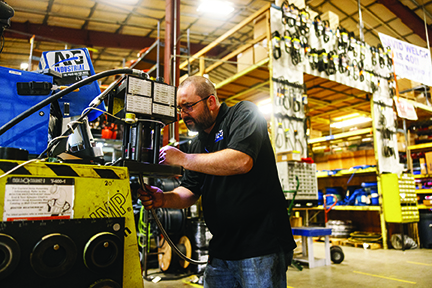 |
| Employees at an ESOP company like ARG Industrial receive annual statements with their vested balance, each person's shares allocated as a percentage of salary. As the company's value grows, so does the individual's stock value. |
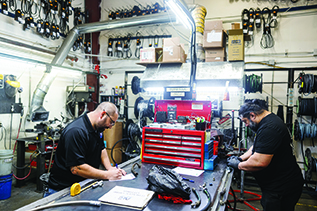 |
“The stock price of the company is valued once a year. Then stock is released from treasury on a specific cadence based on an internal loan that exists. Stock is released and distributed to the participants as a percentage of wages. So, every year, as an employee, you get a statement that says the number of shares you received and what your vested balance is. It’s not cash in an account, but it’s a stock statement, and the value is in the business around us that we’re building together.”
The day after the closing, Mortensen said they all high-fived each other and went back to work.
SHIFTING INTO GROWTH GEAR
Three years later, Alaska Rubber & Supply made its first acquisition, buying a cousin store called Alaska Rubber and Rigging in 2009. From there, the growth transmission went into overdrive. In 2010, the company built its first greenfield location in Wasilla, Alaska, hometown of Sarah Palin. In 2013, they bought five Washington state locations owned by the Adams brothers, and a holding company was formed: Alaska Rubber Group.
Another greenfield location was added in 2014 on the Kenai Peninsula in Alaska, but the next acquisition wasn’t until 2020 when the holding company bought its largest competitor on the rigging and lifting side of the business, Arctic Wire Rope and Supply. In 2021, they bought a Portland, Oregon, location and a small, owner-operated mobile hydraulic business in the Tacoma area. In 2022, the company acquired a location in Bellingham, Washington – its 12th location and last purchase to date – but a savvy business move of another kind had already preceded the last three acquisitions.
“In 2019, we made what I now look back and consider to be a really fortunate and timely decision to make a significant investment in the digital transformation of our business,” said Mortensen. “It was an investment that was probably equal to an acquisition in size and scope in starting an e-commerce or digital store. And that digital branch now has its own staff and basically acts as a 24/7 sales agent for all of the physical stores.”
Feeding orders to all the physical branches for the last few years, the website received a makeover this September – a revised version was launched with new functionalities and tools baked in for an improved customer experience.
M&A LESSONS
Going from one to 12 locations in under one and a half decades takes strategy, and Mortensen, who became president and CEO just three years ago, has a definite game plan, built in part from the lessons M&As have taught.
“I think we have the best people, and we’re empowering them to be entrepreneurial, make good decisions, and serve the customers. And we’ve learned a lot through mergers and acquisitions, as well as about greenfields. We have a successful formula that we’re looking to copy and paste when we look for companies to acquire. We want to make sure they fit our DNA – number one, we’re not looking to get into different verticals that we don’t really have a lot of competency in. We’re staying in the fluid power/lifting/rigging vertical and the associated industrial supplies, but more so, we’re looking for companies that have a culture that would align with employee ownership and that sense of individual responsibility.”
ARG Industrial rebranded in February 2023 as a way to unify all employees under one banner, as well as to clarify its brand among customers and suppliers. Along its M&A journey, the company has developed a strong sense of what to look for in a prospective acquisition. For example, they’ll avoid a company where the owner wears too many hats and makes all the decisions – preferring instead a team that’s been empowered like ARG’s. Mortensen says he now knows the importance of speaking to as many employees as possible before the deal is inked.
“If you run into a principal who won’t let you talk to any of the people, that’s a red flag,” he said.
Another lesson learned was making sure you understand the computer networks, the programs they’re running, and people’s ability to engage with various software and platforms.
“In almost every acquisition that we’ve done to this point, that’s been a major pain
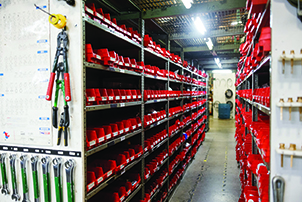 |
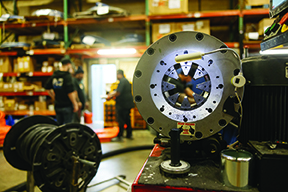 |
point,” said Mortensen. “They haven’t made investments in keeping their computer network up to date. They don’t have data policies, so their data is usually all over the place. It’s not secure, it’s not clean. They don’t have any governance policies. The ERP they’re running may or may not be antiquated. A principal that’s selling a business has thought, ‘If I’m going to sell this in the next five years, do I really want to invest in upgrading this stuff?’ That’s kind of a hidden pothole that we’ve uncovered a few times.”
HOT AND COLD
At its Alaska locations, seeing a moose or a black bear in the parking lot isn’t too uncommon, and average winter temps in the minus 40s and 50s can literally freeze the expression on your face, Mortensen discovered first hand many years ago. The climate, coupled with sometimes highly remote locations of customers, has caused ARG Industrial to be somewhat less segmented as it strives to leverage their supply network to provide whatever customers may need.
But maybe there’s something about the frosty arctic air that promotes hot, innovative business thinking.
One of the first accomplishments Mortensen put in place as president and CEO was the intentional creation of a true senior leadership team comprised today of 12 men and women – most of whom were internally promoted – and includes a director of sales, director of accounting, director of purchasing, director of marketing, and director of ecommerce.
“Historically, we’ve been a very bootstrapping company,” he said. “If there was a new task that needed to be done, we looked around and said, ‘OK, who can do that? We were a very small group trying to herd cats and all spinning a bunch of different plates. My vision for where we needed to go necessitated that we upskill the team. I firmly believe that if something’s everybody’s job, it’s nobody’s job, and I can only hold so many keys. So, while I can do a little bit of everything well, I needed to get a team around me of people that were better at every single thing than I am.”
Another bold business move occurred in lock-step with ARG Industrial’s rebranding: The company adopted a new mode of running the company called The Entrepreneurial Operating System (EOS, www.eosworldwide.com) created by Gino Wickman, author of “Traction.”
“No pun intended, but it really created an opportunity to drive traction in our company,” said Mortensen. “It’s not a bunch of people moving in 15 different directions. It’s not 12 locations doing 12 different things. It’s a team of people, and we all understand what the goal is for the quarter. We understand who’s carrying what rock in the process, and there’s weekly accountability for where we’re at. We help each other identify problems and solve them. And it’s really helping us move forward in a consistent way.” The company isn’t just focused on inward improvement.
In 2024, ARG Industrial plans to release a new “CPQ” software it developed for distribution. It’s designed to help industrial distributors in any vertical – that build and sell any kind of assemblies – represent their process and customer journey in a digital way.
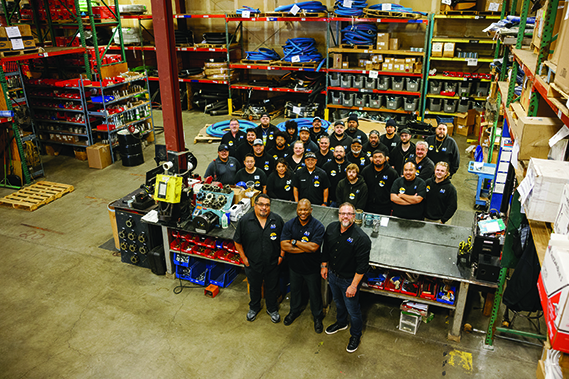 |
| Seventeen years after becoming an ESOP, ARG Industrial is now a booming, regional player in the Pacific Northwest with 12 locations and 200 people. This picture along with all the pictures in this article, was taken at ARG's Anchorage headquarters location. |
“We’re always doing exciting stuff, and we’re excited about this,” said Mortensen. “It started as an idea a little more than two and a half years ago, and now we’re almost ready to launch it.
“Industrial distributors are really good at taking parts and pieces from different manufacturers, putting them together, and then selling them. But from a digital transformation perspective, we need our customers to see and understand the breadth of products. It’s also super important see pricing and availability and to be able to transact business with us in a digital way. Until now, we couldn’t really encapsulate the full sense of what we did as an assembly fabrication distributor – and now, this tool will enable anybody who uses it to do exactly that.”
This article originally appeared in the November/December 2023 issue of Industrial Supply magazine. Copyright 2023, Direct Business Media.













